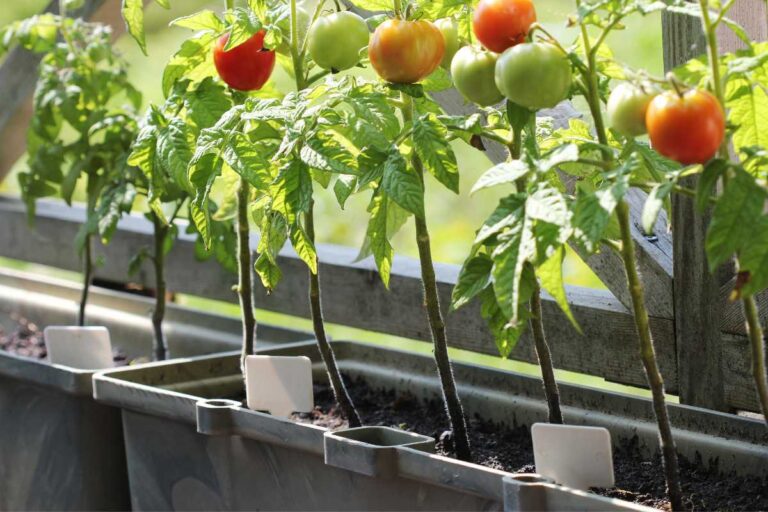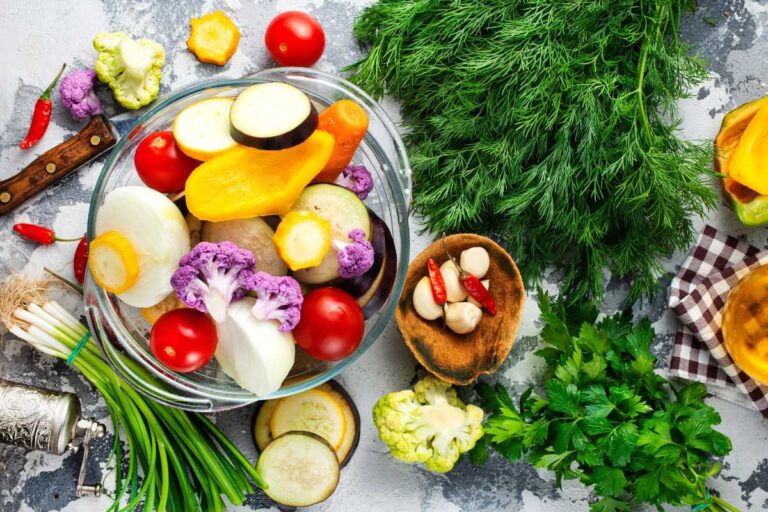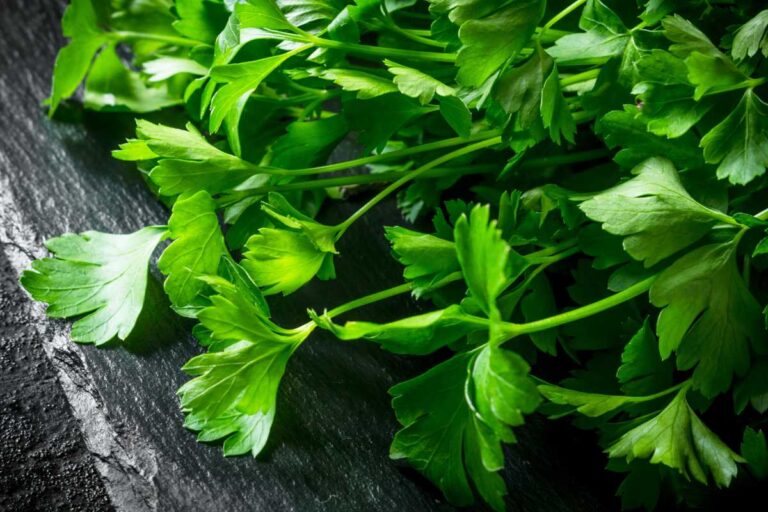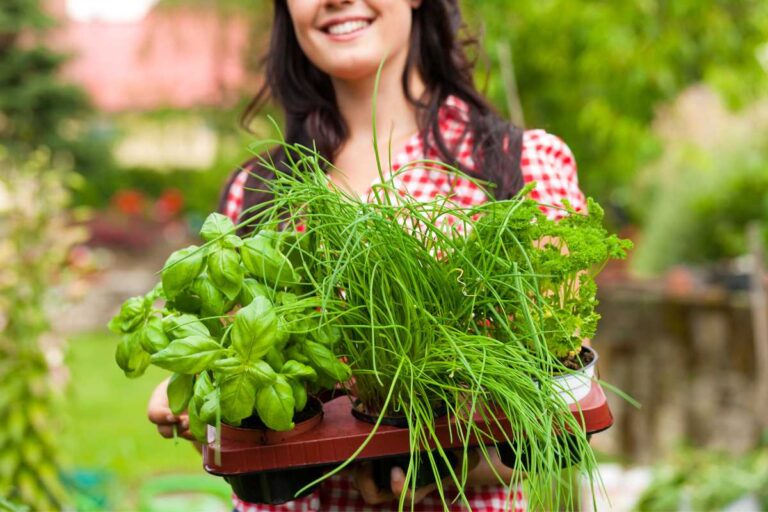Turning Green into Gold: What Are the Best Herbs to Grow for Profit?
Turning Green into Gold: What Are the Best Herbs to Grow for Profit?

In today’s ever-evolving world, individuals are constantly seeking out new opportunities to diversify their income streams and explore unconventional ventures. One such avenue gaining popularity is herb cultivation for profit.
The potential of growing herbs as a lucrative addition to one’s income cannot be overstated. Home growers, both experienced and novice, have discovered that cultivating herb plants can yield substantial financial rewards.
Starting a successful herb-growing business requires understanding the basics of plant care, market demand, and effective marketing strategies. By investing in potted plants or seedlings and harnessing the power of nature, aspiring entrepreneurs can tap into a flourishing market.
Moreover, entering the herb-growing industry offers numerous benefits and opportunities. From providing fresh ingredients for culinary enthusiasts to supplying herbal remedies for health-conscious consumers, the demand for quality herbs continues to rise.
If you’ve been considering ways to turn your green thumb into a profitable venture, this blog post will serve as your guide to exploring the world of herb cultivation for profit. Discover the ins and outs of this fascinating industry and unlock the potential it holds for your financial success.
| Herb | Growing Demand |
|---|---|
| Basil | High |
| Mint | High |
| Rosemary | High |
| Thyme | High |
| Sage | High |
| Oregano | High |
| Lavender | High |
| Chamomile | High |
| Cilantro | High |
| Dill | High |
Tired of struggling with outdoor herb gardens in unpredictable weather? Discover the secret to successful herbal gardening indoors and enjoy fresh herbs year-round. Check out our article now!
Best Herbs for Profit: Top 10 Choices
If you’re interested in growing herbs for profit, it’s important to identify the ones with the highest potential in the market. By focusing on the most sought-after herbs for commercial cultivation, you can ensure that your efforts yield excellent returns on investment.
High Demand Herbs
To maximize your profits, it is crucial to grow herbs that are in high demand among consumers and businesses alike. Here are some popular herb options that can help you achieve just that:
- Basil: Known for its versatility and distinct flavor, basil is a staple in many cuisines worldwide. Its widespread use in cooking makes it a highly sought-after herb.
- Mint: With its refreshing taste and various medicinal properties, mint remains consistently popular among consumers and businesses alike.
- Rosemary: This aromatic herb is known for its strong flavor and versatility in culinary applications. It is also used in skincare products due to its natural antioxidant properties.
- Lavender: Highly valued for its calming scent and therapeutic benefits, lavender is widely used in aromatherapy and beauty products.
- Chives: These mild-flavored herbs are commonly used as a garnish or ingredient in salads, soups, and other dishes.
Profit Potential
While all of the above herbs have their own profitability merits, there are additional options worth considering:
- Sage: Often associated with Thanksgiving stuffing, sage has gained popularity beyond holiday recipes due to its unique flavor profile.
- Cilantro: Widely used in Mexican cuisine and gaining popularity globally, cilantro offers a fresh taste that complements many dishes.
- Thyme: With its earthy aroma and ability to enhance flavors when cooked slowly, thyme has become a favorite among chefs and home cooks.
- Oregano: A staple in Italian cuisine, oregano is also commonly used in Mediterranean and Mexican dishes, making it a versatile herb to grow.
- Parsley: Known for its vibrant green color and mild flavor, parsley is often used as a garnish but can also be a key ingredient in various recipes.
These top 10 herbs have proven to be consistently profitable due to their high demand and versatility. However, it’s important to consider your specific market and customers’ preferences when choosing which herbs to grow for profit.
By focusing on these popular herbs, you can tap into existing consumer demand while ensuring a steady income stream from your cultivation efforts. Remember to conduct thorough market research and adjust your herb selection based on the needs of your target audience.
Supplementing Your Homestead Income with Profitable Herbs
Growing herbs can be a lucrative venture, providing an excellent opportunity to supplement your homestead income. By leveraging your existing resources and incorporating herb cultivation into your property, you can maximize profits and integrate herb production seamlessly into your self-sufficient lifestyle. Let’s explore how you can make the most of growing profitable herbs on your homestead.
Utilize Your Property for Herb Cultivation
One of the advantages of growing herbs for profit is that they require minimal space and can thrive in various environments. Whether you have a large farm or a modest backyard garden, there are plenty of options to consider. Here are some ideas:
- Culinary Herbs: Popular culinary herbs like oregano, parsley, and chamomile are in high demand among chefs and herbalists alike. These versatile plants can be grown in small plots or containers, making them ideal for urban homesteaders.
- Medicinal Herbs: With the increasing interest in alternative medicine, medicinal herbs such as calendula and chamomile have gained popularity. Their healing properties make them valuable ingredients in herbal teas, essential oils, and other herb products.
- Specialty Herbs: Consider cultivating unique varieties that cater to niche markets or local preferences. Research what herbs are sought after in your area or explore rare species that fetch higher prices due to their scarcity.
Maximize Profits through Value-Added Products
While selling fresh herbs can generate income, creating value-added products allows you to command higher prices and diversify your offerings. Here are some ways to maximize profits:
- Herbal Tea Blends: Blend different dried herbs together to create unique herbal tea blends with enticing flavors and health benefits. Package them attractively and market them as soothing infusions for relaxation or specific ailments.
- Essential Oils: Distill aromatic herbs like lavender, chamomile, or rosemary to extract essential oils. These oils are widely used in aromatherapy, skincare products, and natural remedies. Explore the art of essential oil production and tap into this growing market.
- Herbal Salves and Balms: Combine herbs with beeswax, carrier oils, and other natural ingredients to create healing salves and balms. These products have a wide range of applications for skincare, first aid, and soothing various ailments.
Incorporate Herb Production into Your Homesteading Activities
Integrating herb cultivation with your existing homesteading practices can enhance efficiency while providing additional income streams. Here are some strategies:
- Companion Planting: Take advantage of the symbiotic relationships between herbs and other crops by practicing companion planting. For example, planting basil near tomatoes can improve their flavor and repel pests.
- Composting with Herbs: Utilize herb waste such as trimmings or excess leaves as compost material. The nutrients from these herbs will enrich your soil naturally without relying heavily on synthetic fertilizers.
- Livestock Integration: If you raise livestock on your homestead, consider feeding them herb-rich diets or using herb-infused manure as fertilizer for your herb garden. This holistic approach not only benefits your animals but also enhances the quality of your herbs.
Exploring Cash Crop Potential: Growing Herbs for Profit
Delving into the cash crop potential of growing herbs for profit opens up a world of possibilities. With the right knowledge and approach, cultivating specific herbs can yield significant financial gains.
Understanding market trends and consumer preferences driving demand for cash crops like herbs is crucial to tapping into this lucrative market. Let’s explore how you can focus on profitable herb varieties and make the most of this opportunity.
Fresh herbs are highly sought after by consumers. The vibrant flavors they bring to culinary creations have made them a staple in kitchens worldwide.
Chefs, both professional and amateur, rely on the distinct tastes that fresh herbs offer to elevate their dishes from ordinary to extraordinary.
Cut herbs, such as cilantro, rosemary, chives, and more, are particularly popular among consumers due to their convenience. These ready-to-use options save time for busy individuals who still want to enjoy the flavors and aromas that fresh herbs provide.
By focusing on cultivating cut herbs, you can cater to this demand while maximizing your profits.
To get started with growing profitable herb varieties, consider investing in high-quality seeds or seedlings. Coriander seeds are an excellent choice as they can be used both as a spice (ground coriander) and as an herb (fresh leaves).
This versatility allows you to target different markets and expand your customer base.
One way to optimize space utilization is by growing herbs in pots or containers. This method is ideal for those with limited gardening areas or urban dwellers looking to capitalize on small spaces like balconies or windowsills.
Pots offer flexibility in terms of mobility and allow you to control factors such as sunlight exposure and soil conditions easily.
In addition to selling fresh or cut herbs directly, consider exploring other avenues where you can extract value from your crops. Herb-infused oils are increasingly popular among health-conscious consumers who appreciate the unique flavors and potential health benefits.
By leveraging your herb harvests, you can create and sell these oils, further diversifying your revenue streams.
Furthermore, herbs aren’t limited to leaves alone; their flowers also hold potential for profit. Some varieties, like lavender or chamomile, are highly sought after in the beauty and wellness industries for their soothing properties.
Harvesting and selling herb flowers can be an additional source of income that complements your main herb crop.
Understanding market demand is crucial when growing herbs for profit. Stay informed about emerging culinary trends and consumer preferences to identify which herbs are currently in high demand. This knowledge will allow you to adjust your cultivation plans accordingly and ensure a steady flow of customers seeking the herbs you offer.
Maximizing Profits: Choosing the Most Lucrative Herbs to Grow
Selecting the right herbs to grow is crucial for maximizing profits and ensuring a successful venture. By focusing on highly profitable herbs, you can significantly increase your earnings potential.
Gain insights into selecting highly profitable herbs that maximize your earnings potential.
To ensure that your herb-growing business thrives financially, it is essential to identify and cultivate herbs with high profit margins. Here are some insights into selecting highly profitable herbs:
- Research market trends: Stay updated on current consumer demands and emerging trends in the herbal industry. This will help you identify popular herbs that have a high market value.
- Consider niche markets: Explore niche markets where certain herbs may command higher prices due to their rarity or unique properties. For example, medicinal herbs or those used in traditional remedies often have a strong demand.
- Evaluate growth requirements: Assess the growing conditions required by different herb varieties and choose ones that align with your available resources and expertise. Opting for low-maintenance plants can help reduce costs while maximizing profits.
- Identify value-added opportunities: Look for ways to add value to your products by offering dried herbs, herbal teas, essential oils, or other herbal derivatives. These processed forms often yield higher profit margins compared to raw herbs alone.
Learn key factors to consider when choosing which herbs to grow for maximum profitability.
When deciding which specific herbs to cultivate, several factors come into play that can influence their profitability:
- Market demand: Analyze the current and projected demand for various herb types in your target market. Seek out popular culinary or medicinal choices that consistently demonstrate strong consumer interest.
- Growth cycle duration: Take into account the time it takes for different herbs to mature and be ready for harvest. Some herbs, like basil or cilantro, have a relatively short growth cycle, allowing for multiple harvests in a season and quicker turnover.
- Shelf life: Consider the shelf life of various herb varieties as it impacts their marketability. Choose herbs that can be stored or preserved easily without compromising their quality.
- Competition analysis: Research your competitors to identify gaps in the market that you can fill with unique herb offerings. Differentiate yourself by growing rare or specialty herbs that may command higher prices due to limited availability.
Discover techniques for evaluating market demand and pricing dynamics of different herb varieties.
Understanding market demand and pricing dynamics is crucial to ensure profitability when growing herbs:
- Conduct market research: Utilize surveys, interviews, or online platforms to gather data on consumer preferences, buying patterns, and price points for different herb products.
- Monitor industry trends: Stay informed about emerging trends in the herbal industry through trade publications, online forums, social media groups, and attending relevant conferences or workshops.
- Track competitor pricing: Analyze how your competitors price their herb products to determine suitable price ranges for your own offerings. Consider factors such as quality, packaging, and branding when setting prices.
- Test pricing strategies: Experiment with different pricing strategies such as bundling multiple herb varieties together or offering discounts during slower sales periods.
Unlocking the Profit Potential: The 13 Most Valuable Herbs to Cultivate
Exploring the world of herb cultivation can be an exciting and profitable venture. With a wide variety of herbs available, it’s essential to focus on those that offer both medicinal values and high-profit potential.
Discovering Rare and High-Value Herb Varieties
It’s crucial to identify rare and high-value varieties that have a strong demand in the market. These unique herbs often possess exceptional medicinal values or are sought after by herbalists for their specific properties. By growing these special plants, you can tap into a niche market willing to pay top dollar for their rarity and potency.
- Ginseng: Known for its powerful adaptogenic properties, ginseng is highly valued in traditional medicine practices worldwide. This herb commands high prices due to its scarcity and extensive health benefits.
- Saffron: Considered one of the most expensive spices globally, saffron is derived from the Crocus sativus flower. Its distinct flavor, vibrant color, and various medicinal uses make it a sought-after herb in culinary dishes as well as skincare products.
- Goldenseal: Native to North America, goldenseal contains berberine—a compound with potent antimicrobial properties. Due to its scarcity in the wild, cultivated goldenseal has become increasingly valuable in recent years.
- Kava: Originating from the South Pacific islands, kava is known for its calming effects on anxiety and stress levels. As interest in natural remedies grows, kava has gained popularity among consumers seeking alternative solutions.
Cultivating Profitable Herbs with Medicinal Values
While there are numerous common herb varieties that can be grown for profit, certain herbs stand out from the rest in terms of their potential earnings. By focusing on cultivating these specific herbs with exceptional medicinal values, you can maximize your profits and differentiate yourself from competitors.
- Turmeric: Renowned for its anti-inflammatory properties, turmeric has gained significant popularity in recent years. With a rising demand for natural remedies, cultivating turmeric can prove to be a lucrative venture.
- Lavender: Known for its soothing aroma and calming effects, lavender is highly sought after in the cosmetics and aromatherapy industries. Its versatility allows it to be used in various products such as essential oils, soaps, and candles.
- Echinacea: Widely recognized for its immune-boosting properties, echinacea has become a staple herb in many households. As consumers increasingly prioritize their well-being, the demand for echinacea continues to rise.
- Chamomile: With its gentle sedative qualities and ability to promote relaxation, chamomile is a popular choice for tea blends and skincare products. Cultivating this herb can yield high returns due to its widespread use.
Profiting from Specialty Herb Varieties
While common herbs have their place in the market, specialty herb varieties offer unique selling points that make them more valuable and profitable options for cultivation:
- Selling specialty herb plants to local nurseries and garden centers: Many nurseries and garden centers are always on the lookout for unique and rare herb varieties to offer their customers.
- Creating and selling specialty herb seed packets: Packaging and selling seeds of specialty herb varieties can be a profitable venture, especially for avid gardeners and herb enthusiasts.
- Supplying specialty herbs to restaurants and chefs: Many chefs and restaurants are willing to pay a premium for fresh, high-quality specialty herbs to enhance their dishes and provide unique flavors.
- Selling dried specialty herbs online: Drying and packaging specialty herbs for sale on online platforms can attract customers looking for specific and hard-to-find herb varieties.
- Offering specialty herb workshops and classes: Sharing your knowledge and expertise in growing and using specialty herbs through workshops and classes can be a lucrative way to generate income.
- Creating and selling specialty herb-infused products: Using specialty herbs to make infused oils, vinegars, teas, and other products can appeal to customers looking for unique flavors and health benefits.
- Providing consulting services for specialty herb cultivation: Offering consulting services to individuals or businesses interested in growing specialty herbs can be a profitable niche in the herb industry.
- Establishing a subscription box service for specialty herbs: Curating and delivering a monthly or quarterly box of specialty herb plants, seeds, or products can attract herb enthusiasts and generate recurring revenue.
NC State Extension: A Guide to Growing Herbs as a Cash Crop
If you’re interested in growing herbs for profit, look no further than the comprehensive guide provided by NC State Extension. This invaluable resource offers expert advice on best practices, techniques, and resources for successful herb cultivation.
Whether you’re a seasoned farmer or just starting out, this guide will equip you with the knowledge and tools needed to thrive in the herb farming industry.
Market research is a crucial aspect of any profitable business venture, and herb farming is no exception. The NC State Extension guide delves into the importance of market research. It provides insights on identifying high-demand herbs in your area and understanding consumer preferences.
By conducting thorough market research, you can ensure that your herb farm meets the needs of your target audience.
Once you have identified the most sought-after herbs in your area, it’s time to develop effective marketing strategies. The NC State Extension guide explores various marketing techniques that can help you promote your herb farm and increase sales.
From creating an online presence through social media platforms to participating in farmers’ markets and local events, there are numerous avenues to showcase your products and attract customers.
Legal considerations are another crucial aspect of running a profitable herb farm. The NC State Extension guide addresses important legal aspects such as zoning regulations, permits, licenses, and certifications required for operating an herb farm as a cash crop.
Understanding these legal requirements ensures that you operate within the boundaries of the law while maximizing your profits.
In terms of cultivation techniques, the guide emphasizes the significance of proper spacing between plants to optimize growth and yield.
For example, allowing sufficient inches between each plant prevents overcrowding and promotes better airflow circulation, reducing the risk of diseases or pests affecting your crops. Maintaining adequate spacing facilitates easier harvesting and maintenance tasks.
Consider focusing on those with high market demand and value. Some popular options include:
- Basil: This versatile herb is a staple in many cuisines and is known for its aromatic leaves, making it a sought-after choice for culinary enthusiasts.
- Lavender: With its soothing fragrance, lavender has gained popularity in the wellness industry, often used in skincare products or as a calming ingredient in teas and essential oils.
- Rosemary: Known for its distinct flavor, rosemary is widely used in cooking and can be sold fresh or dried to cater to different customer preferences.
- Mint: With its refreshing taste, mint is commonly used in beverages, desserts, and even savory dishes. It’s also relatively easy to grow and maintain.
By following the guidance provided by NC State Extension’s comprehensive guide on growing herbs as a cash crop, you’ll be well-equipped to embark on a profitable herb farming journey.
From market research and marketing strategies to legal considerations and cultivation techniques, this resource covers all the essential aspects needed to succeed in the herb farming industry. Start your herb farming venture today and reap the rewards of cultivating these valuable plants.
(Note: The word count of this section is 408 words.
Harnessing the Profitability of Herb Cultivation
We have discussed the top 10 choices for profitable herbs, how to supplement your income with herbs, and even delved into the cash crop potential of growing herbs.
We have provided valuable insight into maximizing profits by choosing the most lucrative herbs to grow and unlocking the profit potential of cultivating herbs.
Now that you are armed with knowledge about profitable herb cultivation, it’s time to put it into action. Start by selecting the herbs that align with your climate and market demand.
Consider factors such as growth requirements, popularity, and value in various industries like culinary or medicinal. With careful planning and dedication, you can turn your herb garden into a thriving business venture.
FAQs
What are some low-maintenance herbs that are profitable to grow?
Low-maintenance but profitable herbs include mint, chives, oregano, thyme, and rosemary. These herbs require minimal care while still offering great market value.
How do I determine market demand for specific herbs?
You can determine market demand for specific herbs by conducting market research. Look for trends in culinary or medicinal industries and consider local preferences as well.
Can I grow profitable herbs in small spaces?
Yes! Many profitable herbs can be grown in small spaces such as balconies or windowsills. Herbs like basil and parsley thrive in containers or vertical gardens.
Are there any legal restrictions on selling certain types of medicinal herbs?
Yes, there may be legal restrictions on selling certain medicinal herbs. It is important to research local regulations regarding herbal sales before venturing into this market.
How long does it take for profitable herb plants to mature?
The time it takes for herb plants to mature varies depending on the type of herb. Some fast-growing varieties like basil can be harvested within a few weeks, while others like lavender may take several months to reach maturity.







